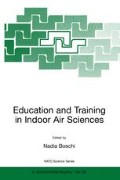Abstract
It has become increasingly clear that human population growth and development activities have combined to place a growing, perhaps excessive burden on environmental resources. Consumption of natural resources, encroachment on land, and emission of pollutants have, together produced strong indicators of environmental stress. Examples of such stress include depletion of the ozone layer and of many natural resources, massive loss of topsoil and of biological diversity, and potential causes of global climate change including increased atmospheric concentrations of carbon dioxide and other greenhouse gases [1-3]. Such environmental stressors generally correlate with economic development and growth [2].
Access this chapter
Tax calculation will be finalised at checkout
Purchases are for personal use only
Preview
Unable to display preview. Download preview PDF.
References
Weterings, R.A.P.M., J.B. Opschoor (1992). The Ecocapacity as a Challenge to Technological Development. Rijswijk, the Netherlands: Advisory Council for Research on Nature and Environment (RMNO).
Daly, Herman (1998) Beyond Growth, Boston: Beacon Press Books.
Cohen, J. E., (1995) “Population Growth and Earth’s Human Carrying Capacity.” Science. 269, (July 21) 341–346.
Levin, H.(1995) Building Ecology: An Architect’s Perspective On Healthy Buildings (Keynote Lecture), In Maroni, M. ed. Proceedings of Healthy Buildings ‘95, Volume 1, Milan, Italy, September 10–14.5–24.
Brundtland, G. (1986) World Commission on Environment and Development.
Dobson, A. (1996). Environmental Sustainabilities: An Analysis and a Typology, Environmental Politics, 5 (3), Fall 1966, 401–428.
Levin, H, A. Boerstra, and S. Ray (1995) “Scoping U.S. Buildings Inventory Flows and Environmental Impacts in Life Cycle Assessment.” Abstract for presentation at Second SETAC World Congress, Vancouver, BC, November 5–9, 1995.
Ehrlich, P.R., A. H. Ehrlich, J. P. Holdren (1977). Ecoscience: Population, Resources, Environment, Third Edition. San Francisco: W.H. Freeman and Company.
Levin, H. (1997) “Systematic Evaluation and Assessment of Building Environmental Performance,” (Keynote lecture) Proceedings, 2 nd International Buildings and Environment Conference, Paris, France, June 9–12, 1997.
Azar, C., J. Holmberg, and K. Lindgren, 1996. Socio-ecological indicators for sustainability. Ecological Economics 18: 89–112.
Jönsson, Å. (1998) Life cycle assessment and indoor environmental assessment, CIB World Congress, Gavle, Sweden, June 1998.
Udo de Haes, H.A. ed. (1996) Towards a methodology for life cycle impact
Author information
Authors and Affiliations
Editor information
Editors and Affiliations
Rights and permissions
Copyright information
© 1999 Springer Science+Business Media Dordrecht
About this chapter
Cite this chapter
Levin, H. (1999). A Sustainable Environment Basis for Education in Indoor Air Sciences. In: Boschi, N. (eds) Education and Training in Indoor Air Sciences. NATO Science Series, vol 60. Springer, Dordrecht. https://doi.org/10.1007/978-94-011-4511-4_17
Download citation
DOI: https://doi.org/10.1007/978-94-011-4511-4_17
Publisher Name: Springer, Dordrecht
Print ISBN: 978-0-7923-5911-1
Online ISBN: 978-94-011-4511-4
eBook Packages: Springer Book Archive

